#Social Media Design Orlando
Explore tagged Tumblr posts
Text
Top 10 Social Media Benefits for Businesses
Elevate your business with Social Media Management in Orlando! Our dedicated team capitalizes on the top 10 advantages of social media for businesses, delivering enhanced brand visibility, engagement, and sales. From budget-friendly marketing tactics to real-time customer insights, our Orlando-based experts leverage the full spectrum of social media benefits to empower your business in the digital era.
0 notes
Text
Do you want to join in leadlogic for digital marketing services ??
0 notes
Text
Digital marketing agencies in Orlando Florida
The Vines Digital is a rapidly expanding Digital Marketing Agency dedicated to empowering businesses and individuals to achieve their objectives using cutting-edge digital marketing strategies. With a mission to serve startups, medium-sized enterprises, and large corporations worldwide, we are steadfast in delivering exceptional support and high-quality services that yield tangible outcomes.
Our comprehensive range of services includes:
App Development: Crafting innovative and user-friendly applications tailored to your specific needs.
Branding: Elevating your brand identity to resonate with your target audience and stand out in the market.
Website Development & Design: Creating visually stunning and highly functional websites that enhance user experience.
Email Marketing: Engaging and nurturing your audience through effective email campaigns.
Social Media Marketing: Amplifying your presence and driving engagement across various social media platforms.
eCommerce: Building robust online stores that facilitate seamless transactions and enhance customer satisfaction.
Tech Support: Providing reliable technical assistance to ensure smooth operation and optimal performance.
Google Ads: Strategically leveraging Google Ads to increase visibility and drive traffic to your business.
SEO: Optimizing your online presence to improve search engine rankings and attract organic traffic.
Blogging: Establishing thought leadership and fostering meaningful connections through informative and compelling blog content.
Logo Design: Creating visually appealing and memorable logos that reflect your brand identity. know more here Digital marketing agencies in Orlando Florida
At The Vines Digital, we are dedicated to delivering results-driven solutions that propel your business forward in the digital landscape.
#Digital marketing agencies in Orlando Florida#SEO agencies in Orlando Florida#Web development agencies in Orlando Florida#Content marketing agencies in Orlando Florida#Social media management agencies in Orlando Florida#Online advertising agencies in Orlando Florida#Branding agencies in Orlando Florida#E-commerce solutions agencies in Orlando Florida#Graphic design agencies in Orlando Florida#Analytics tracking agencies in Orlando Florida
0 notes
Text
Orlando Digital Marketing Agency
Trustela Consulting is a #1 digital marketing agency that specializes in helping small businesses grow. They offer a variety of services, including SEO, PPC, social media marketing, and content marketing.
youtube
#digital marketing agency in florida#seo agency in florida#digital marketing agency orlando#seo agency orlando#orlando seo services#social media marketing agency orlando#content marketing#orlando web design company#Youtube
1 note
·
View note
Text
A Story of Determination - Web Strategy Plus
youtube
Enhance your online presence with Web Strategy Plus, a top-tier social media design company specializing in website development in Cincinnati, OH. Our expert web design team in Cincinnati crafts unique solutions for your digital success, complemented by effective social media marketing, search engine optimization (SEO), and internet marketing strategies. Partner with us for unparalleled social media management in Orlando and drive your brand's growth with our proven SEO marketing agency expertise. Elevate your online strategy with Web Strategy Plus today.
We can help you develop an overall marketing strategy that will drive more leads to your business. Contact us for a free consultation! https://www.webstrategyplus.com/
#Social Media Design Company#Website Development Cincinnati OH#Web Design Companies In Cincinnati#Social Media Marketing In Cincinnati#Search Engine Optimization Company Cincinnati#SEO Marketing Agency Orlando#Internet Marketing Cincinnati#Social Media Management Orlando
0 notes
Text
Please share !!
Dear followers and mutuals,
I need your help ! ⚠️⚠️⚠️
(sorry for the long post)
The same Astarion artwork continues to be stolen time and time again by unscrupulous shops (I've filed over 20 complaints, just on Etsy alone). One particular independent shop refuses to remove the items using my artwork, ignores my messages, and deletes all my comments warning buyers.
Here's the specific artwork, my original fanart, and the low-quality and insolent modification to turn it into a shoddy sweatshirt and t-shirt design. Which is promoted on TikTok !
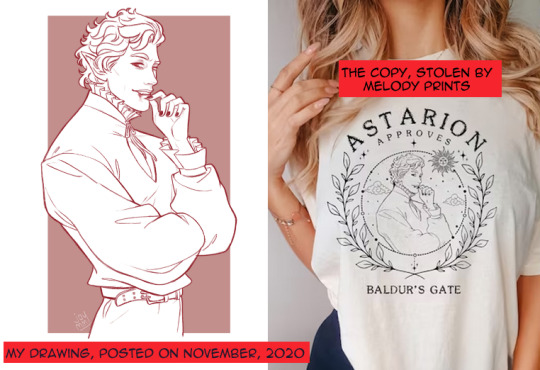
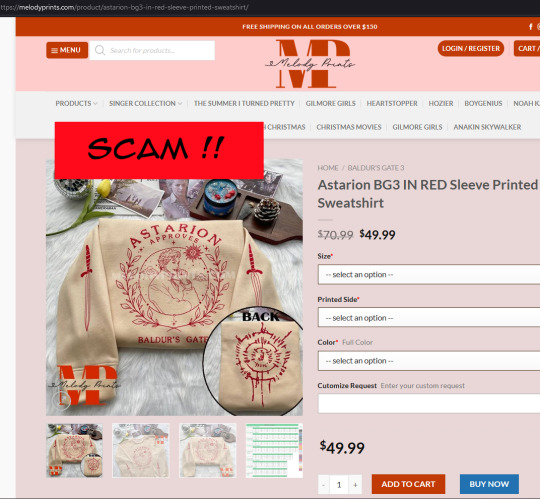
This has to stop.
Sharing your work on the internet, or even just sharing your passion, has become a nightmare for artists and creators. We already have enough to deal with in the face of AI threats and platforms like Aliexpress; now we have to manage a surge in theft as well.
This shop is also appropriating other artworks from the BG3 fandom.
Here are the screenshots :
I'm seeking your help in identifying the authors of these artworks so that I can notify them.
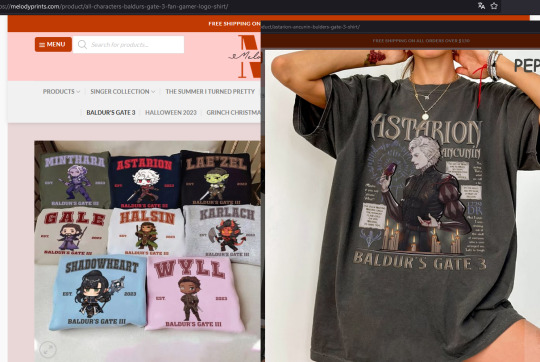
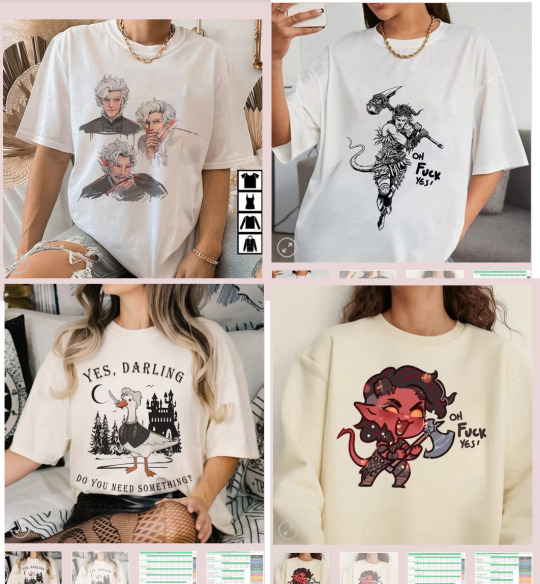
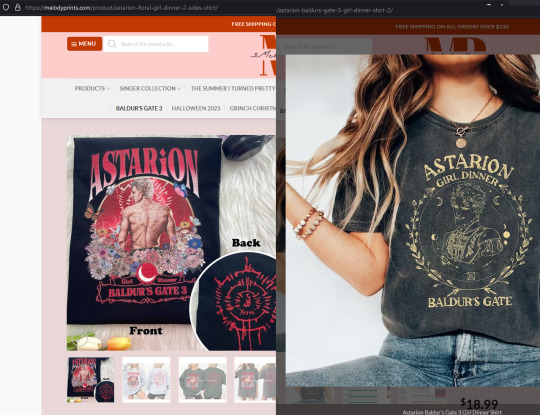
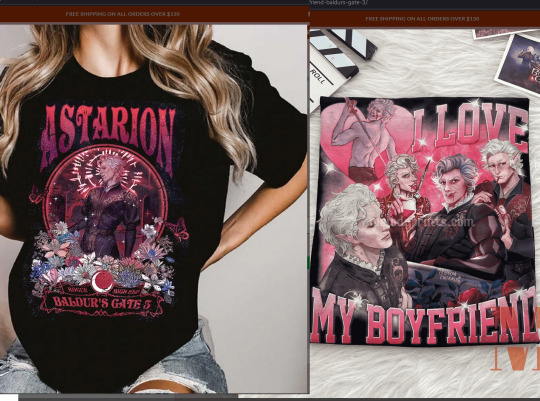
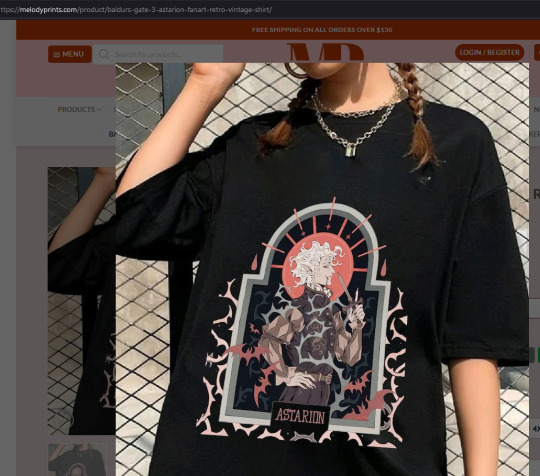
I'm also currently in contact with a specialized attorney because I've had enough.
The cup is full, and I want to be able to showcase my drawings without enriching thieves. It's particularly painful during this period of economic crisis, where, like many others, I'm struggling to make ends meet, to feed my two young kids.
Here are all the contact details for this fraudulent shop :
⚠️ Please share this post and report Melody prints social media's accounts ⚠️ Everyone needs to know they are a THIEF ⚠️
melodyprints.com
The website says the shop is located in 217 S Parramore Ave, Orlando, FL 32805, United States
TikTok account of melodyprints is spookymelodyprints
Instagram account of melodyprints is _melodyprints
Also, Ghosttraveler on TikTok has made a callout video to help, here is the link, if you can share it as well : https://www.tiktok.com/@ghosttraveler/video/7291769599530454314
Thank you so much for reading this, and for your help.
2K notes
·
View notes
Text
Hi everyone!
My name is Jourdyn Osbey, and I am thrilled to announce my plans to open a Black-owned independent bookstore and coffee shop in the heart of Orlando, FL – Secret Sisterhood Book Café! This endeavor is more than just a business; it’s an upcoming community designed to foster connection, empowerment, and a love for literature.
I’ve been reluctant to ask for help, but I believe in the power of community and know that together, we can create something truly special. Here’s how you can support Secret Sisterhood Book Café:
1. Follow Us: Stay updated on our journey by following us on social media.
2. Spread the Word: Share our mission with your friends, family, and network. This can help us reach our target audience!
3. Donate: If you’re able, contribute to our GoFundMe. Every donation, no matter the size, brings us one step closer to opening our doors.
To learn more about our mission and vision, please visit our website: https://secretsisterhoodbc.my.canva.site/ssbc-mission-website
Thank you for your support. Together, we can build a beautiful space for our community!🤎📚🪴☕️
Our GoFundMe: https://www.gofundme.com/f/supportssb







#book store#books#orlando#coffee#coffetime#coffeshop#bookworm#books and reading#book club#bookish#me#bipoc#black owned#business
102 notes
·
View notes
Note
“but also, the character looked a certain way for almost sixty years, so I understand that there needed to be an adjustment period.”
Or maybe she should just go back to looking the way she did for 60 years without artists being bullied online (not by you) into declaring she was a visible person of color when she clearly wasn’t intended to be that?
The problem with Marvel’s current color guide is obvious when applied to MCU Wanda, but it was always a problem because it privileges two lines in one comic (the Vision & the Scarlet Witch references to Magda being Romani) over the character’s comic & visual history.
BZZZZZZZZT WRONG
First of all, I have no idea why you're citing Vision & the Scarlet Witch specifically. To my recollection, those scenes don't reference any of the characters' skin color or racial appearance, but if you want to talk about their identities, Magda is consistently and clearly stated to be Romani in every version of her backstory and in many of her appearances from the 80s all the way to the present day. In the current canon, she's not Wanda and Pietro's birth mother, so she's actually not relevant to this conversation at all, but the Maximoffs, their canon birth family, are Roma, and always have been.
Second-- and it's amazing to me that this point is still lost on so many people-- the character designs were changed to reflect the need for more inclusive representations of Romani characters. The majority of, if not all Romani characters in Marvel comics have historically been drawn as white people. It's not authentic, and it's not inclusive. Wanda and Pietro were not "intended" to look like anything. Their historically white appearance is the result of ignorance, color bias in the comics industry, and the fact that their identities were applied retroactively and, in some ways, problematically, which, I hate to say, is the case for many Romani characters. Orlando, Dauterman, et al, changed their designs out of a desire to improve upon that problematic history, not to "privilege" any one description over another. It is a net positive, and in my personal opinion as someone who's been immersed in this fandom for a long time, it's just about the only way to get people to actually recognize and talk about us as a minority.
I understand that this kind of change in character design creates discrepancies that might be challenging to navigate, and I think that people should be honest when we're talking about Wanda and Pietro's history. And it's absolutely true that fans behave inappropriately on social media, and a lot of people who are otherwise well-intentioned sometimes miss the point and say things that are untrue or tokenizing. But if you are genuinely invested in better Romani representation, and you're approaching any part of that conversation in good faith, you would not be arguing against Wanda and Pietro being drawn with brown skin. That's, like, crazy to me.
12 notes
·
View notes
Text
Top 10 Hottest Event Trends You Can’t Ignore in 2024
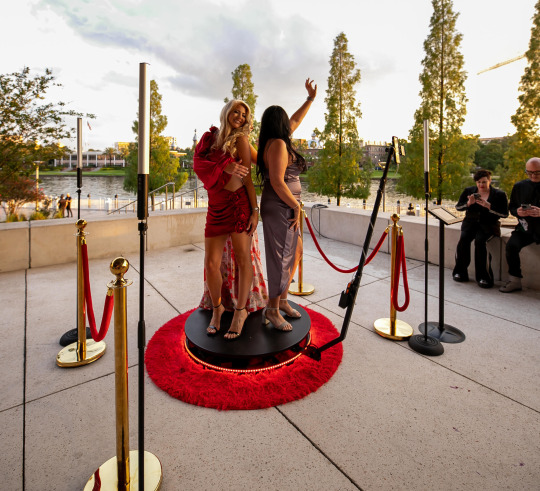
As someone who’s been attending and covering events for years, I've seen firsthand how the industry constantly evolves. 2024 is shaping up to be an exciting year with some trends that are simply too hot to ignore. Here are my top 10 picks for the hottest event trends that you should definitely keep an eye on.
Immersive Experiences: Attendees want more than just a seat at the table—they want to be part of the action. Virtual reality, augmented reality, and interactive installations are turning ordinary events into extraordinary experiences.
Sustainability: Eco-conscious events are becoming the gold standard. From zero-waste catering to sustainable decor, planners are making green choices that resonate with today’s environmentally aware audience.
Personalization: People love feeling like an event was designed just for them. Whether it’s personalized swag, custom apps, or experiences tailored to individual tastes, personalization is key.
Hybrid Events: Combining in-person and virtual elements, hybrid events are here to stay. They offer flexibility and accessibility, allowing more people to join in on the fun, no matter where they are.
Health and Safety: Post-pandemic, health and safety remain top priorities. Expect to see enhanced sanitation, contactless check-ins, and more spacious layouts becoming the norm.
Tech-Driven Networking: Networking has gone high-tech. With AI-powered matchmaking and virtual lounges, making meaningful connections at events has never been easier—or more exciting.
Interactive Food Stations: The days of boring buffets are over. Interactive food stations, where guests can customize their meals or enjoy live cooking demos, are adding flavor to events in more ways than one.
360 Photo Booths: Capturing memories has evolved far beyond the traditional photo booth. 360 photo booths are taking events by storm, offering a dynamic, full-circle experience that guests can’t get enough of. These booths provide immersive, shareable content perfect for social media, making them a must-have at any event. For example, I’ve noticed that 360 photo booth rentals in Orlando are becoming increasingly popular, with attendees raving about the unique and engaging experience they offer.
Experiential Marketing: Brands are getting more creative with how they engage attendees. Through experiential marketing, companies are leaving lasting impressions that go far beyond the typical swag bag.
Pop-Up Experiences: Pop-ups are popping up everywhere, and they’re as popular as ever. These temporary, mobile experiences are surprising attendees and adding an unexpected element to events.
These trends are making waves in the events world, ensuring that each gathering is more engaging and memorable than the last. Whether you're planning an event or just attending, keeping these trends in mind will help you stay ahead of the curve and fully enjoy everything 2024 has to offer.
2 notes
·
View notes
Note
ahhh who did those older bnb designs you drew i wanna follow them
They don’t have any social media but they do have an Etsy!
4 notes
·
View notes
Text

Important Social Media Advertising Facts
Social Media Advertising in Orlando is a dynamic and results-driven digital marketing strategy tailored to the vibrant market of Orlando, Florida. This specialized approach leverages popular social media platforms like Facebook, Instagram, and Twitter to promote businesses, engage with local audiences, and drive targeted traffic. Orlando's unique blend of tourism, entertainment, and local businesses makes it an ideal landscape for social media advertising, allowing businesses to connect with both residents and visitors. Whether you're a local startup or an established brand, harnessing the power of social media advertising in Orlando can boost your online presence and generate tangible growth in this dynamic city.
0 notes
Text

At Lead Logic, we make digital marketing accessible to businesses of all sizes. Start boosting your online visibility and driving more traffic today!
Visit our website at Lead Logic to learn more about our services or to get a free consultation. Let us help you succeed in the digital world!
Contact us now!
Visit us at https://leadlogic.in/
Email: [email protected]
Let me know if you need any modifications!
0 notes
Text
4 reasons to get the 2024 Toyota GR86 TRUENO Edition
Toyota is revving its engines for the 2024 Toyota GR lineup - and a new trim is being added to the 2024 Orlando Toyota GR86 lineup: the TRUENO Edition (it means ‘thunder’ in Spanish). Many Toyota fans are excited about this trim because it celebrates its throwback design - the Toyota AE86 from the 1980s. But, what does this trim have that makes it so special? We’re going to make it simple for you.
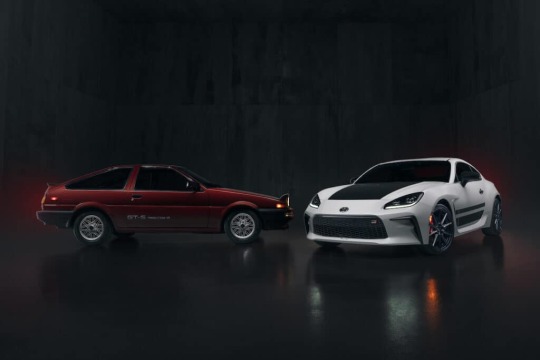
What we love about the 2024 Toyota GR86 Trueno Edition
#1: The design – and its throwback features
The Toyota GR86 TRUENO Edition features retro two-toned paint and ‘TRUENO Edition’ badging. As said earlier, it is styled like the Toyota AE86 as an homage to its 40th anniversary. The Toyota AE86 was a part of the 5th generation of Toyota Corollas from 1984 to 1987 and showcased sporty liftback styling, pop-up headlights, and an angular hood. But, it also has a modern look with its 10-spoke 18-inch black metallic wheels, a black duckbill spoiler, the black TRUENO graphics on the side panels, and two paint colors to choose from - Halo or Track bRed.
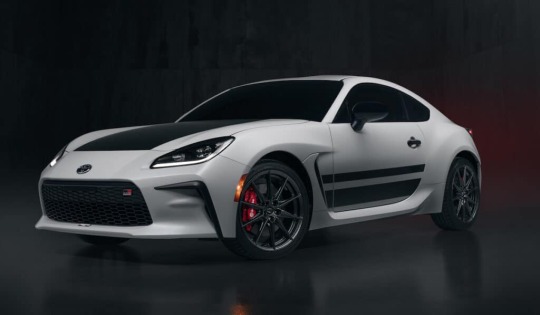
#2 - See what’s inside
We talked about the exterior – now it’s time to go inside this Orlando Toyota’s cockpit. When you go inside you’ll see that it is extremely comfortable and easy to manage with the low-slung, driver-centric layout with the push-start button, 8-inch touchscreen audio system with 8 premium speakers. You’re going to be sitting in Ultrasuede sport seats with red leather, a leather-wrapped steering wheel, special all-weather floor mats with ‘TRUENO’ badging, and red-stitched shift gear.
Since the beginning of time, Toyota has been all about safety – and it doesn’t stop at this Orlando Toyota sportscar. It comes standard with Active Safety Suite with Pre-Collision Braking System, Pre-Collision Throttle Management, Adaptive Cruise Control, Lead Vehicle Start Alert, Lane Departure Warning with Sway Warning, and Automatic High Beams.

#3 - The speed.
Toyota has never failed when it comes to reliability - and if you want to go 0-60 mph in just 6.6 seconds? You’ll be able to with the 2024 Toyota GR86 TRUENO Edition. This Orlando Toyota sportscar can do this with its naturally aspirated 2.4L FA-24 engine – the horsepower is 228 and the torque is at 184 lb.-ft. It also has rear-wheel drive and comes in both a 6-speed manual and a 6-speed automatic transmission.
The 2024 Toyota GR86 TRUENO Edition has special perks – and even if you aren’t able to get it on your hands, you can add it to any GR86 year and/or trim. The special performance package includes ZF SACHS Dampers and Brembo brakes that offer maximized performance. This new package ensures firm and stable steering, maximized ground contact, and a quieter cabin.

#4 - The NASA membership
The 2024 Toyota GR86 TRUENO Edition comes with a complimentary one-year membership to the National Auto Sport Association – which makes your experience even better. With this membership, the 860 GR86 TRUENO Edition owners (yes we said 860) will be able to receive discounts on NASA-sanctioned events and other benefits – like one free High-Performance Driving Event.
Channel the Initial D car in this new Toyota special edition
Not only Toyota sportscar fans are excited about this trim being added to the Orlando Toyota GR86 lineup - but also anime fans. Initial D is a manga-turned-anime that focuses on the evolution of Takumi Fujiwara where he becomes a downhill racing hero in a Toyota AE86 – which the 2024 Toyota GR86 TRUENO Edition takes stylistic cues from. So, the car has been coined the name ‘initial D car’.
See a new 2024 Toyota GR86 Trueno Edition in person
Ready to make this Orlando Toyota yours? Stay tuned – we’ll keep you updated if you follow us on social media. You can also call Toyota of Orlando to get more info and arrival dates at (407)298-4500. We’re conveniently located just off I-4 across from the Mall at Millenia if you want to swing by!
2 notes
·
View notes
Photo
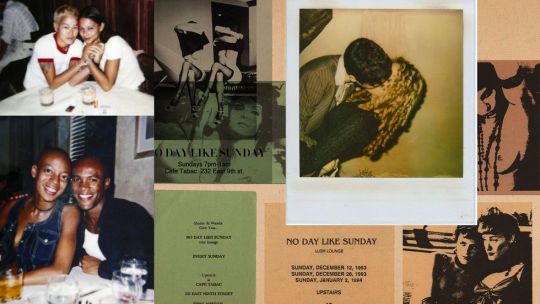
The Year Lesbians Were Chic On any given Sunday in 1993, fresh from releasing her explosive "SEX" tome and the equally explicit album "Erotica," Madonna could be found at the chicest lesbian party at the hottest of restaurant-bars in the East Village. Flanked by gay it-girls like CK One model Jenny Shimizu or OG nepo baby socialite Ingrid Caseras, the pop star, in her prime, would ascend the winding stairs to the VIPs-only second floor and walk the runway between tables full of New York City's most beautiful women, who wouldn’t even pretend to hide their stares. Any given Sunday, Queen Latifah might be in the adjoining room, playing a round on the pink felt pool table and buying drinks for all the players, part-time model-DJ Sharee Nash playing a sensual mix of imported Euro acid-jazz and neo-soul; women buy cassettes to take home with them at the end of the night.A salon that ran from 1993 to 1995 at the model-owned celebrity hot spot, Café Tabac’s "No Day Like Sunday" — known colloquially as "Sundays at Café Tabac" — has been credited with being the birthplace of “lesbian chic.” A cultural moment christened by the media, lesbians' 15 minutes had to do with a convergence of social and political elements, but perhaps no physical space embodied it more than Sharee Nash and Wanda Acosta's famed fashion-forward party in the East Village. Owned by a male model with regulars like Naomi Campbell, Bono and Fran Lebowitz, Café Tabac was already a chic place to see and be seen for the fashion set, but Sundays were for the girls like designers and stylists (and ex-girlfriends) like Patricia Field and Rebecca Weinberg and rapper MC Lyte. A 1994 New Yorker profile of indie filmmakers Guinevere Turner and Rose Troche (also ex-girlfriends) fresh off their Sundance Jury win for their dyke film Go Fish were profiled "drinking Scotch and smoking Rothmans" one Sunday at Tabac, wherein Troche says, "you don't have to look straight or act straight." A New York Magazine item praised Tabac's crowd for being glamorous and "ethnically and sartorially diverse." The party was intended to be something private but different from the dyke dive bars Acosta had been accustomed to. At 28, the Nuyorican party girl divorced her husband and wanted to meet women but was struggling to find a place where she felt comfortable. "I was already feeling like I had been hiding this part of myself for so long," Acosta tells PAPER, "so to have to go down to this dark basement in the back of some space to meet women felt really claustrophobic. I wanted to see a place that was a more elevated, visible [space] that I could explore, getting dressed up and going out and seeing beautiful women."Acosta happened upon Nash at Alexander Smalls' hip Village soul food restaurant where models worked as hosts, among them some of Nash's girlfriends. One night in '93, Nash (a writer herself) sat reading Virginia Woolf's Orlando. "I guess that was her cue to think 'Maybe she's gay,'" Nash says. The two struck up a conversation and found themselves discussing lesbian nightlife, craving something "different.""Just for diversity — different energy, different music, different food, different looks and different people," Nash says. Having recently moved back to New York from Germany, Nash was DJing small spots and was tired of big clubs. There were some great options like The Clit Club at Bar Room 432 on Fridays, but New York was shifting into a dinner-and-drinks era where patrons would commandeer an event all night and let the party circulate around them. The idea of dinner was appealing for Nash, who says that, growing up in St. Louis, her family was big on Sunday meals. She describes the ideal Tabac night as dinner followed by "cocktails, running around, dancing, dessert, then dessert." The party started out as private – word-of-mouth and invite-only — which was part of the appeal. Some of the potentially closeted attendees appreciated the clandestine affair; rarely were photos taken in the pre-cell phone era. "We didn't invite the celebrities," Nash says. "They just found out and they just started showing up."With New York fashion and celebrity comes New York media, and the party started to pick up bits in the press, including the aforementioned New Yorker piece. Designer friends would create looks for Nash to wear as she worked the party, enabling her to connect adoring fans to the creator in the very same room. The salon only ran for two years, but the stories and symbolism of No Day Like Sundays has been so enduring that co-creator Wanda and filmmaker Karen B. Song have been working on a film documenting the women and time of Tabac, touching on what made it so special. "There was that performative aspect of it," Song says. "You would walk in that space and see what it was like to see the confidence in front of you, what that translates to." Acosta says Sundays at Tabac "allowed women to be able to come in and express themselves in a different way than they had been able to before.""I think before we were dressing and signifying each other through our dress codes," Acosta says. "In the early '90s, we started to be able to express ourselves as individuals."Several of the aforementioned women like Patricia Field, Jenny Shimizu and Guinevere Turner are interviewed for the Sundays at Café Tabac documentary, as well as other attendees such as award-winning author Jacqueline Woodson, gay critics Michael Musto and Hilton Als and butch icon Lea DeLaria, all reflecting on the weekly gathering set amongst a highly visible moment for lesbians and, more generally, queer women."We all loved just watching to see who was gonna come up the stairs — what they were wearing and who they were with, " Acosta says. "It was really a bit of voyeurism as well." Voyeurism looms large in lesbian chic, as lesbian visibility has always been a Xena-sized double-edged sword. Although lesbian chic has certainly achieved more visibility and acceptance for some lesbians, lesbians themselves weren't always in charge of the messaging. "Lesbian chic" was a tangible trend co-opted by the media looking for a sexy new flavor of the month, and, post-AIDS, gay women were finally on the menu.Madonna, for one, thrust sexual experimentation into the zeitgeist in the late '80s, first with a flirtatious and rumored relationship with Sandra Bernhard in tabloids and then late-night television. Together, they appeared on "The Late Show with David Letterman" in matching ACT Up uniforms (white T-shirts, denim jean shorts and Doc Martens), dropping New York lesbian dive The Cubbyhole into salacious conversation."She was an enfant terrible sometimes, but for the most part, I think everyone was like, 'Whoa – what's, what is she gonna do next?'" Song says of Madonna. "She was so at the prime – she was in the media eye and every time she was photographed or at a party or at a fashion show or whatever, shooting a music video, she always had a lesbian with her." After falling out with Bernhard (reportedly over Caseras), Madonna set her sights on k.d. lang, feigning a romantic or sexual relationship with the androgynous country-punk crooner and likening her handsome swagger to both her ex-husband Sean Penn and Elvis. (Later, lang would admit they shared a publicist and that the lesbian chic thing "probably benefitted" the both of them.)More than Madonna, lang played an integral role in the visibility of lesbians because, for one, she is one. lang's coming out on the cover of The Advocate in May 1992 followed the success of her sex bomb of a pop crossover album Ingenue, a Grammy-winning turn that was due, in part, to her hit devouring single "Constant Craving." Both the pop cultural and political landscapes were primed for lang to confirm that the seductive love songs on Ingenue were written about women, and she seemed to be rewarded for her outsiderness as opposed to being shunned by it, as she had in the country music realm. She was tired of staying in the closet and playing by as many rules as she could abide, and so her move into contemporary pop came with self-acceptance, a laissez-faire attitude and confident seduction in suits on stage and in interviews. Lang stirred something in people of all genders and sexual orientations. People were fascinated by her, unclear where or how to place her in their desires, but, well, craving more. Lang's effect was so palpable that she won a 1993 MTV Video Music Award for Best Female Pop Performance despite, as she remarked, "never getting played on MTV."Lang's coming out happened in the Clinton era, when the President and First Lady counted a few well-placed lesbians as friends and third-wave feminists were turning political actions into protests for lesbian visibility. The singer rode along the pop cultural push for lesbians to be recognized and represented and became a de facto poster girl. A now-famous New York Magazine cover from 1993 has the square-jawed singer gazing into the lens, brow angled in a saucy dare; all capital letters, all-white font: "LESBIAN CHIC" emblazoned across her velvet-clad cross-body arm, the subhead "The Bold Brave New World of Gay Women" literally resting on her shoulder. It wasn't just k.d., of course. In 1993, Melissa Etheridge came out and released her Grammy-winning Yes I Am, Lea DeLaria made dyke jokes on The Arsenio Hall Show and, by then, openly queer Sandra Bernhard had both a Playboy cover and a regular bisexual role on Roseanne. Tennis star Martina Navratilova had her dyke drama splashed all over The Washington Post. It was primarily white women being celebrated for their chicness, and that there were at least a handful of them being so visible meant only one thing to the media — lesbianism was a cool new trend that could be exploited for a hot minute.In August of '93, lang was being shaven and straddled by supermodel Cindy Crawford on the cover and in the pages of what is now an iconic issue of Vanity Fair. “I don’t know how to use femininity as a powerful tool. I use my sexuality, but I eliminate the gender from it," lang told Vanity Fair, saying that she's long felt a "social pressure to be beautiful, thin, stylish."Never before had a butch lesbian been celebrated, despite a long lineage, and while her Vanity Fair issue remains one of the most iconic covers ever, it wasn't long before butches were erased from the lesbian chic narrative in favor of something more desirable by men.At least the Vanity Fair piece was all about lang; the New York piece mentioned her briefly but primarily reported on the trend of openly gay women who have "transformed the lesbian image." Author Jeanie Russell Kasindorf reported that "the short-haired 'bulldyke' is still many Americans' idea of what a gay woman looks like. Now 'lipstick lesbians' and 'designer dykes' share the bar with the 'butch/femme' group; the downtown black leather crowd and women in Jones New York suits wander among them.'" In other words, anyone could be a lesbian, which made lesbians both visible and invisible at the same time.This new attention spawned skewed speculation from places like Playboy ("the secret to the craze is that Nineties-style lesbianism requires no commitment"), 20/20 and Geraldo Rivera; coffee table how-to guides on lesbian hair, dress and sex (primarily addressing a straight, curious audience) and fashion editorials posing glamorous women together in suggestive photos ripe with Sapphic subtext. It seemed there was a proliferation of lesbians out of nowhere — lesbian comedian Kate Clinton joked in a 1993 LA Times piece that lesbian chic is "in a lot of ways what lesbian separatism was, but with better PR."For women like Clinton who had been performing publicly out as a lesbian since the early ‘80s, the new fad of “lipstick lesbians” and “designer dykes” was alienating to the larger community. Some found it hypersexualizing while others found it neutering, forcing a recycled conversation about respectability politics and feminist principles that has and will continue to plague lesbians for as long as we live in a hetero-patriarchal, capitalist society. If we don't own our own narratives, then how can any of us know or agree upon what a lesbian is or should be? Mairead Sullivan, Associate Professor of Women's and Gender Studies at Loyola Marymount University and author of Lesbian Death, says 1993 was significant in that it "was the year 'lesbian' lost its political bite," at least to the consuming public."This is a moment when 'lesbian' is no longer politically associated with a militant radical feminism," Sullivan tells PAPER. "Lesbian chic arrives as a disidentification of feminism."The early '90s was removed enough from the '70s that lesbians were no longer associated with the militant radical feminism of their foremothers, instead acting in response to it. No longer operating out of separatism, women came to work with gay men and trans people during the AIDS epidemic, a new generation of lesbians and bisexual women developing and honing demonstration tactics, bringing newfound ways of being seen and heard into a new future of sex positivity.Media spectacle was one way to get attention. Sullivan points to the political work and televising of the 1993 March on Washington (where the action group the Lesbian Avengers held the first-ever Dyke March with 20,000 lesbians marching together) as part of what led heteronormative stalwarts like Newsweek to run cover stories on lesbians and "the limits of tolerance.""Some people are panicking about [lesbians] and the Newsweek article is doing this identification of it: 'Lesbians are all good trying to raise children, not fringe topless lesbians with their fists in the air,'" Sullivan says. No longer were lesbians seen as men-hating threats to the nuclear family if all they wanted was to be part of their own. The irony is that lesbian visibility could not have happened without the topless lesbians or their fists. It was these activists who forced the lavender menace conversation with NOW, seeking to be part of resourced feminism post-women's liberation, and in the '80s, despite feminist backlash, were huge parts of national AIDS organizations like Act UP and Queer Nation. Within these factions, lesbians were finding themselves, creating connections and empowering each other. Sullivan points out that 1993 was also the first year lesbians were ever counted in any official way as a demographic. When the FDA finally gave AIDS activists a seat the proverbial table in 1991, they brought lesbian breast cancer advocates with them, leading to an NIH-sponsored study on lesbian health and breast cancer. The results went across the AP Newswire and were published widely. "So it's across the national news, this declaration that there's a lesbian breast cancer epidemic, and that becomes a real way in which lesbian then becomes this very clear demarcated like demographic category, in which now there's like an impetus or maybe put differently like a structure to count lesbians that didn't really exist before," Sullivan says.Those numbers reflected a market for those courting untapped markets, and “lesbian” was now an identity that could be advertised to and capitalized on. After close to two decades as a music label for women's music, Olivia Records switched to a lesbian travel company for women in 1990, placing full-page ads in the newly launched glossy Deneuve (later Curve) magazine for trips like its historic, media-hyped sail to Lesbos in 1993. Alcohol companies and brands like Subaru took bets on catering to an untapped subculture with pink dollars to spend, affording gay and lesbian magazines spots on special interest shelves in big box bookstores.Joining Curve in 1992 was OUT magazine, the first glossy gay and lesbian lifestyle magazine that positioned itself as less political than The Advocate or similar news-centric LGBT publications. Spokesman Michael Kaminer told The New York Times that the magazine would "redefine what gay fashion is," adding, "Some people think that lesbian women wear only jeans and Birkenstocks." The pervasive dowdy lesbian stereotype was born out of 1970s separatist lesbians who eschewed capitalism and patriarchal beauty standards. But lesbians weren't an invention of the '70s any more than were the '90s. Pre-dating what is often considered the birth of modern lesbianism are several Sapphic heydays, including the 1920s Harlem Renaissance performers like Gladys Bentley and Ma Rainey and the Lost Generation of Gertrude Stein, Natalie Barney and Djuna Barnes. (In fact, the first use of the phrase "lesbian chic" was made by historian Lillian Faderman in her 1991 book Odd Girls and Twilight Lovers, in a chapter called "Lesbian Chic: Experimentation and Repression in the 1920s," borrowing a phrase from Djuna Barnes' 1928 Ladies Alamack.) One hundred years ago, lesbians were thriving in their own private artistic circles but still had to maintain a cloak of passing heterosexuality in the interest of their own safety. Every decade following had its own lesbian subcultures (from butch/femme in the 1950s to the respectability politics of the Daughters of Bilitis into the Gay Liberation of the late-'60s), but the proliferation of lesbian visibility that the '70s brought exploded notions of a monolithic sameness when the Sex Wars divided lesbians over things like porn, sex work and S&M into the '80s. When award-winning writer, publisher and sexpert Susie Bright went to work at the hotly contested lesbian erotic magazine On Our Backs in San Francisco in the '80s, she tells PAPER "being in the closet was still de rigor for lesbians and seemed to be just the province of a few well-placed gay men."Facing "real denigration exclusion and persecution by the conservative mainstream feminist movement," Bright and the sex workers who both posed for and published On Our Backs were told they were ruining the progress feminists had made by celebrating their bodies, their desires and their sex positivity in editorial spreads and articles as their answer to Playboy (they even had a butch pin-up of the month).On Our Backs published from 1984 to 2006, long outlasting lesbian chic's 15 minutes, which Bright credits "not just because of our sex appeal but because the charisma and the political vision of 'what if women's sexuality had nothing to do with virtue or decoration or her fertility?'""We strutted our stuff and we voiced our political point of view, and then years later in the nineties, this lesbian chic thing comes splashing across the mainstream press, and my first reaction was, without us, this wouldn't have happened, but I already hate it because it is a new kind of packaging of titillation for men and an accentuation of the femme to the exclusion of the butch," Bright said. (Radical Desire, a retrospective of On Our Backs and its historic women and trans photographers is available virtually from Cornell.)Part of the problem was not just that the idea of lesbians being cool for a moment was not just that it commodified lesbians as a consumable lifestyle, but it suggested lesbianism was something to put on temporarily, like a costume for a theme party. "Lesbian sexual power is not because you're skinny or petite or rich or have the perfect complexion or have a Gucci bag or friends in high places. It's not about 'Ha ha, I was a lesbian at a party for five minutes — it was incredible!'" She adds wryly: "If it stops them from killing us and taking our children and refusing to hire us and chasing us out of our homes and refusing to let us attend our family death beds — if that's what this is about, great, have your little lesbian chic moment."The reality of representation was not all positive: 1993 was the first year hate crimes against gays surpassed racially motivated attacks. The '90s in particular were record-breaking for lesbian murders — Talana Kreeger in 1990, Susan Pittmann and Christine Puckett in 1992, Sylvia Lugo in 1995, Roxanne Ellis and Michelle Abdill in 1995, Julie Williams and Lollie Winans in 1996 and Martha Oleman in 1997. Although not a lesbian, trans man Brandon Teena's murder also sent reverberations through the community. Simply seeing more depictions of gay women wasn't necessarily translating into acceptance or a promise of safety. In fact, it seemed being more visible made them more of a target, which has always been a conundrum for gender-nonconforming people. A media-sanctioned celebration of cisgender, able-bodied, middle-to-upper-class lesbians wasn't helpful to all lesbians, which begs the continual question: If that's the case, how could "lesbian chic" be good at all? What started as a celebration of k.d. lang as a masc-of-center cover model from Alberta, Canada was swiftly reconfigured into a fashion moment that inevitably leaned away from female masculinity and into the edgy but non-threatening "lipstick lesbian." Today, there seems to be a discrepancy on what lesbian chic is – A look? A red lip? A swagger? An identity? – and that adds to the confusion. Fashion expert Chelsea Fairless, co-creator of the popular Instagram account and podcast Every Outfit on Sex and the City, defines lesbian chic as a style that women have always and still wear today."It was kind of like the '90s version of Marlene Dietrich," Fairless tells PAPER. "It was about the men's wear, but with full lipstick heels, in many instances, gelled hair."Fairless designed a T-shirt for (ex-girlfriend) butch comic-actor and Tabac regular Lea DeLaria that bemoaned the moment that she sold at public appearances, reading: "I survived lesbian chic," with 'lesbian chic' written in red lipstick. "Lea is a butch woman of a certain age, and that shirt is speaking to her fans that had a similar experience or a similar reaction to lesbian chic at the time that it was happening," Fairless said. She points to an OUT cover DeLaria shot in 1998 that DeLaria posted for a throwback Thursday not long ago, with DeLaria writing in the caption, "Why the fuck am I wearing lipstick? And grabbing my tit?!" That it was a gay magazine and six years after lesbian chic was au courant suggested that something had been lost in translation.DeLaria was not the lone butch at Tabac, and Nash is quick to point out that the party was not solely catering to high-femme fashion models and their famous friends. "There were celebrities in there, but we had friends who were construction workers who build skyscrapers. I think those women are equally badass," Nash says. "There we had school teachers, professors. We wanted to make it women from all walks of life. It wasn't just exclusive to just pretty models."Nationally, the publicity offered helped to establish lesbians as a demographic to be counted and catered to, but in many ways clung to the preferred idea of an acceptable type of lesbian. (DeLaria, for one, played a lecherous butch coming onto Goldie Hawn in the 1996 film "The First Wives Club" in an otherwise comical scene at a hip lesbian bar. She's played several more stereotypical roles of the same ilk since.) But there's no question Ellen DeGeneres couldn't have come out on primetime television without kd lang and, arguably, lesbian chic having given networks enough proof that there could be a monetary benefit from teasing something so taboo. (Lang, of course, appeared in the episode.)The best-selling musical tour of the late-'90s, the all-women's Lilith Fair, had what Sullivan can attest to from personal experience, "lesbian feminist aesthetics." It's when the 'chic' replaces feminism that things get cloudy. "As the mainstream media picks up and tries to narrate lesbian chic, it has this way of basically being like 'Don't worry, lesbians aren't as threatening as they seem because they're like all just good girls!'" Sullivan says."Before there was lesbian chic there was lesbian invisibility," Bright said in a 1997 interview. "I'd rather be visible. I know how much I felt like I suffered when the media only discussed the gay community in terms of gay men. But lesbian chic is just another signal of exploitation, like when feminists were portrayed only as bra-burners."New York Magazine, the very publication that had deemed lesbians chic in the first place, declared it past its expiration date by 1995 in a piece about Sundays at Café Tabac. Things were coming to an end. The piece quoted a "sardonic regular" quipping, "There's nothing to do but gawk at all the beautiful people."In 1995, lang's Ingenue follow-up All You Can Eat didn't replicate the former's success, and Madonna was looking to soften her image with her post-Erotica album, Bedtime Stories, and seemed to have tired of lesbians as an accessory. Tabac had become so big that Acosta and Nash (ex-girlfriends) had both floors and lines out the door on four-day weekends. The venue's vibe was changing, following the new New York City trend for lounges, thrift store couches replacing tables and doing away with dinner altogether."It totally changed the space," Acosta said. "It totally changed the party." Nash said she knew that Sundays at Café Tabac were over when one night, Kate Moss came up the steps, followed by Johnny Depp instead of a gang of supermodels. "People were like 'Johnny Depp is here,'" Nash recalls. "I'm like 'Yeah, pretty much a wrap for us. It's over.'"Nash and Acosta both went on to throw other successful parties, but their Sundays at Café Tabac have remained a particularly positive experience for many women who found it a place to see and be seen. Nothing has resonated quite like those nights of lesbian du jour. The struggle now is, like most independent lesbian efforts, the documentary about Sundays is underfunded and the filmmakers are looking for support to bring the project to fruition. (Donations can be made directly to Café Tabac on their website.) Lesbians continue to have their chic fashion moments – brands like The Row, Celine and Louis Vuitton have borrowed from OGs like openly lesbian designer Jil Sander, putting models in boxy baggy suits. "Dressing like a lesbian" is still in or out depending largely on what celebrities are wearing anything akin to menswear. Without stylist Patricia Field, Sex and the City would not have been the fashion inspiration that it was, with every single character on the show having lesbian chic moments of their own. (Fairless points to the 1997 episode where Charlotte befriends a group of art world power lesbians who want her to commit, not just play the part. When Charlotte says she loves female energy but prefers men, one power lesbian tells her, "Sweetheart, that's all very nice. But if you're not going to eat pussy, you're not a dyke.") Without the success of Sex and the City, there wouldn't be The L Word, a show that was essentially lesbian chic in aspiration and action. (Its new iteration Generation Q is as much a reaction to the original as lesbian chic was to second-wave lesbians of the '70s.)Nowadays, Brandi Carlile struts in k.d. lang's heeled boots and designer and creative director Jenna Lyons is joining Martina Navritova's wife as an openly gay Real Housewife as she joins the New York cast this coming season. Some of the most famous and well-regarded lesbians are anchoring Good Morning America, hosting the Oscars and being named "Couture Week's Best Dressed Couple" by Vogue. Lesbian bars may be in flux, but queer nightlife and the intentional creation of inclusive spaces is consistently evolving. And despite clickbait proclamations that 30 years after being chic, lesbians are so over, that's just not the reality. Are lesbians ever really done processing?Sullivan says a lot of the conversations happening at the time of lesbian chic in lesbian and queer communities but also nationally are very mirrored right now. "There are attempts from mainstream media to soften 'lesbian,'" Sullivan says, "but I actually think that the response from the lesbian community was a very strong engagement with lesbian politics and dyke politics – and I think we see that coming back in full force right now." Just like Madonna.Photos courtesy of Wanda Acosta and Karen Song https://www.papermag.com/cafe-tabac-lesbian-chic-2659588433.html
6 notes
·
View notes
Link
#Online #Reputation Management# #Crisis Remove Complaints# Consultants# Services# Local# #Search #Engine Optimization# SEO# GMB# Tools# Software# Online# Companies# Reviews# Tips# Social Media Management# Remove Complaints# BBB# RipOffReport.com# Complaints.com# ComplaintsBoard.com# Blogs # Reviews# Webites# Online# Advertising# Marketing# Ads# Computer# Web Site Development# Hosting# TV# Television# Commercials# Internet# PR# Public Relations# Legal# Lawyer# Law# Attorney# Attorneys# Finance# Loan# Classifieds# Directories# Local Search# Business Leads# Sales Leads# Personal Data Removals# Internet Legal# Training Seminars
2 notes
·
View notes
Text
Unlock the Power of Njsba.com Lawyer Data Extraction for Law Firm Marketing

Unlock the Power of Njsba.com Lawyer Data Extraction for Law Firm Marketing
In today's competitive legal landscape, effective marketing is essential for law firms and legal marketing companies. Having access to accurate and up-to-date data on lawyers and law firms is critical to driving targeted marketing campaigns. With Njsba.com Lawyer Data Extraction by LawyersDataLab.com, law firms and marketing professionals can access valuable attorney data from the New Jersey State Bar Association (NJSBA) website. This New Jersey Lawyers Data Extraction service provides detailed information on lawyers, enabling firms to optimize their marketing strategies and increase client acquisition.
Key Data Fields
Njsba.com Lawyer Data Extraction offers a comprehensive set of data fields that legal marketing teams can leverage:
- Lawyer's name
- Contact email and phone number
- Law firm affiliation
- Practice areas
- Office address and location
- Years of experience
- Bar membership details
- Social media profiles (if available)
This in-depth data can be used to design campaigns that resonate with individual lawyers or specific law firms.
Why Njsba.com Lawyer Data Extraction Is Crucial?
Data is the backbone of any successful marketing campaign, and law firm marketing is no exception. By extracting detailed lawyer information from Njsba.com, legal marketing teams can enhance their efforts in several key areas:
1. Targeted Outreach: With access to specific attorney data such as name, contact information, practice area, and location, law firms can focus their marketing on relevant attorneys, ensuring that their message reaches the right audience.
2. Customized Marketing Campaigns: Having accurate data allows law firms and marketing companies to create personalized campaigns tailored to the unique needs and interests of individual lawyers. This boosts engagement and improves the likelihood of conversion.
3. Lead Generation: The ability to extract precise data from Njsba.com means firms can build a qualified list of leads, enabling them to target potential clients more effectively and streamline the client acquisition process.
Benefits for Law Firms and Legal Marketing Companies
1. Increased Efficiency: Automated data extraction saves time and effort, allowing law firms to focus on strategy and execution rather than manual data collection.
2. Enhanced Precision: With access to reliable and current data, marketing efforts are more likely to succeed, as they can be directed at the right lawyers who match the firm’s target audience.
3. Improved ROI: Targeted, data-driven marketing reduces wasted resources and increases the return on investment (ROI) by focusing on prospects who are most likely to convert into clients.
4. Competitive Advantage: Law firms that utilize Njsba.com Lawyer Data Extraction can stay ahead of competitors by having a comprehensive understanding of the legal landscape in New Jersey.
State Bar Directory Data Scraping
Nebraska State Bar Attorneys Email Database
Azbar.org Attorney Data Scraping
Texasbar.com Lawyer Email Database Extraction
Hawaii State Bar Lawyers Email List
Ohio State Bar Lawyers Mailing List
RIBar Lawyers Email Database
Utahbar.org Lawyers Email List
Wyoming Bar Association Lawyer Data Scraping
Oregon State Bar Attorney Mailing List
State Bar of Michigan Attorneys Email List
Floridabar.org Lawyers Data Scraping
Best State bar Data Extraction Services in USA
Columbus, Chicago, San Antonio, Indianapolis, Jacksonville, Detroit, Denver, San Diego, New Orleans, Tucson, Phoenix, Nashville, Bakersfield, Tulsa, Portland, Oklahoma City, Long Beach, Omaha, Virginia Beach, Atlanta, Los Angeles, Miami, Raleigh, San Jose, Arlington, El Paso, Honolulu, Wichita, Austin, New York, Colorado, Louisville, Fresno, Memphis, Washington D.C., Baltimore, Kansas City, San Francisco, Sacramento, Philadelphia, Fort Worth, Houston, Springs, Orlando, Seattle, Boston, Charlotte, Dallas, Albuquerque, Las Vegas, Milwaukee and Mesa.
Conclusion
Njsba.com Lawyer Data Extraction by Lawyersdatalab.com is an invaluable tool for law firms and legal marketing companies looking to optimize their marketing efforts. By harnessing the power of accurate and comprehensive attorney data, firms can enhance lead generation, improve outreach efforts, and ultimately grow their client base.
Start leveraging the power of lawyer data today for your marketing success!
Website: Lawyersdatalab.com
Email: [email protected]
#njsbalawyerdataextraction#njsbaattorneyprofilesdataextraction#njsbalawyerdatascraping#lawfirmmarketing#legalmarketing#lawyerleads#dataextraction#lawyersdata#marketinglawfirms#datadrivenmarketing#leadgeneration#lawyersdatalab
0 notes